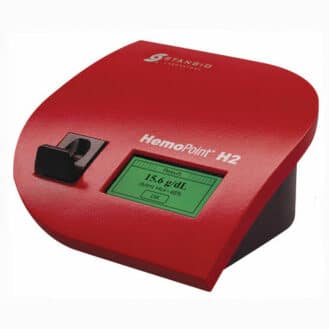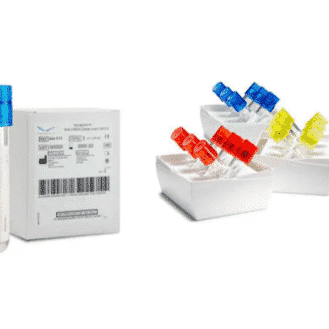There are many sterilization procedures that are more or less suitable depending on the field of application and the equipment to be sterilized. We can name four main ones: by heat, by gas, by plasma phase and by irradiation.

Memmert hot air sterilizer
- Sterilization by heat:
- Steam/wet heat:this procedure is carried out in a sealed enclosure inside which pressurized steam is injected. A steam sterilizer is also called an autoclave. This is the most common method used in healthcare facilities for all heat-resistant medical devices. It is reliable, inexpensive and non-polluting.
- By dry heat: in this case sterilization is carried out using hot, dry air, without increasing the pressure. The air temperature inside the sterilizer is increased, much like in an oven, except that there is no way for air to enter or escape. This process is not used as frequently today as bacteria can sporulate in dry heat. The high temperatures (180°C for 30 minutes or 160°C for two hours) can also damage the equipment.

Tuttnauer PlazMax plasma sterilizer
- Gas sterilization:
- With ethylene oxide:ethylene oxide is an alkylating agent that damages the DNA of microorganisms, preventing them from reproducing. Its sterilizing power is effective at low temperatures; it is therefore suitable for materials sensitive to steam and heat such as complex assembled devices, catheters, stents, certain electronic equipment, wound dressings, etc.
- Formaldehyde: the bactericidal action of this agent is identical to that of ethylene oxide. Formaldehyde even offers certain advantages over ethylene oxide, such as the absence of toxic residues and the absence of explosion risks.
- Plasma phase sterilization: in this process hydrogen peroxide is used, excited by an electromagnetic field. Oxygen free radicals which have a highly sterilizing power are then formed. This type of sterilization is performed at a low temperature and is therefore suitable for heat-sensitive materials such as plastic or certain optical components (fiberscopes, etc.). This process is relatively easy to implement and does not require large installations.
- Sterilization by irradiation: this is mainly used in industrial environments. It can be:
- UV: this process is based on the sensitivity of microorganisms to exposure to low ultraviolet wavelengths. The main applications of this procedure are the preparation of sterile work surfaces in research laboratories, food preservation and air or water purification.
- Infrared: through their absorption in the product, infrared rays cause heating to a depth with is limited according to their wavelength. The electromagnetic wave is usually generated by a magnetron. The technique of infrared heat sterilization is used in the food industry for the pasteurization of basic products only contaminated on the surface (grains, dried fruits, etc.) or cooked products that are packaged then pasteurized (pizzas, pastries, etc.).








